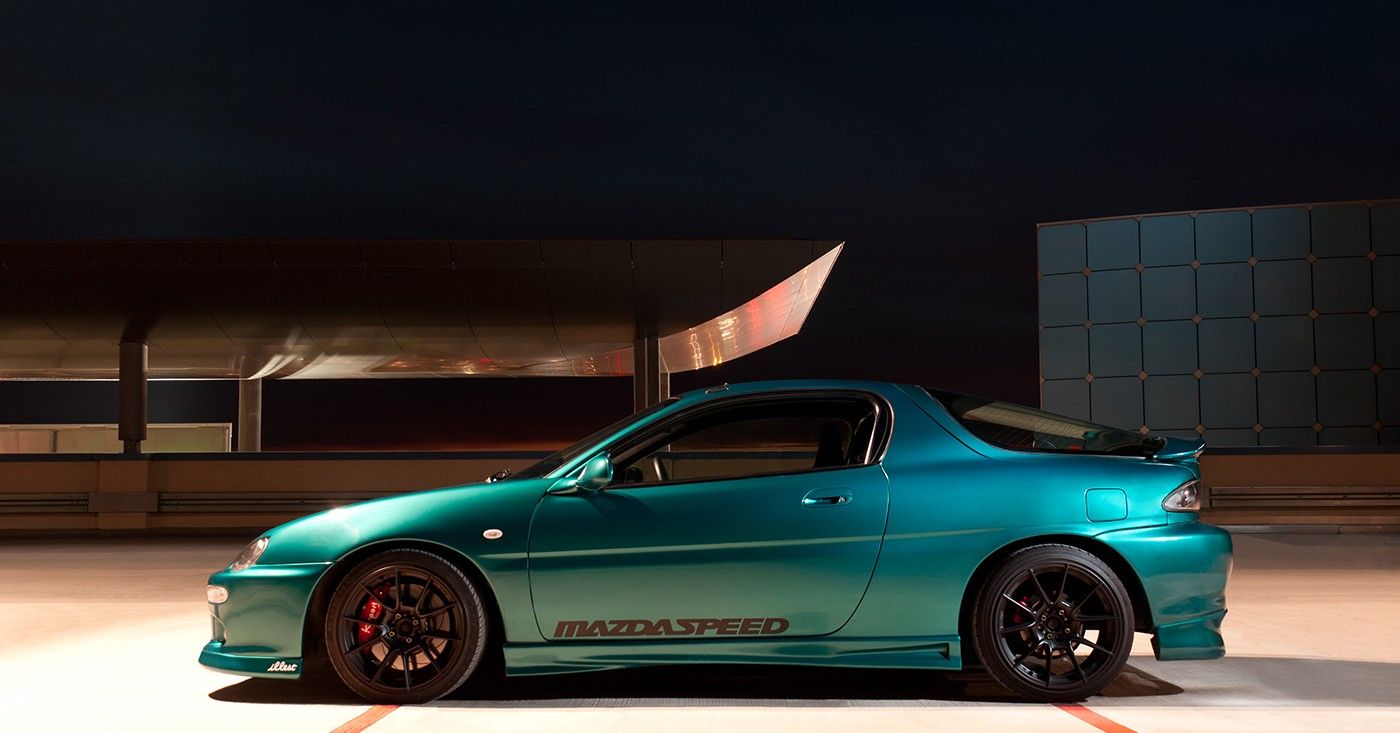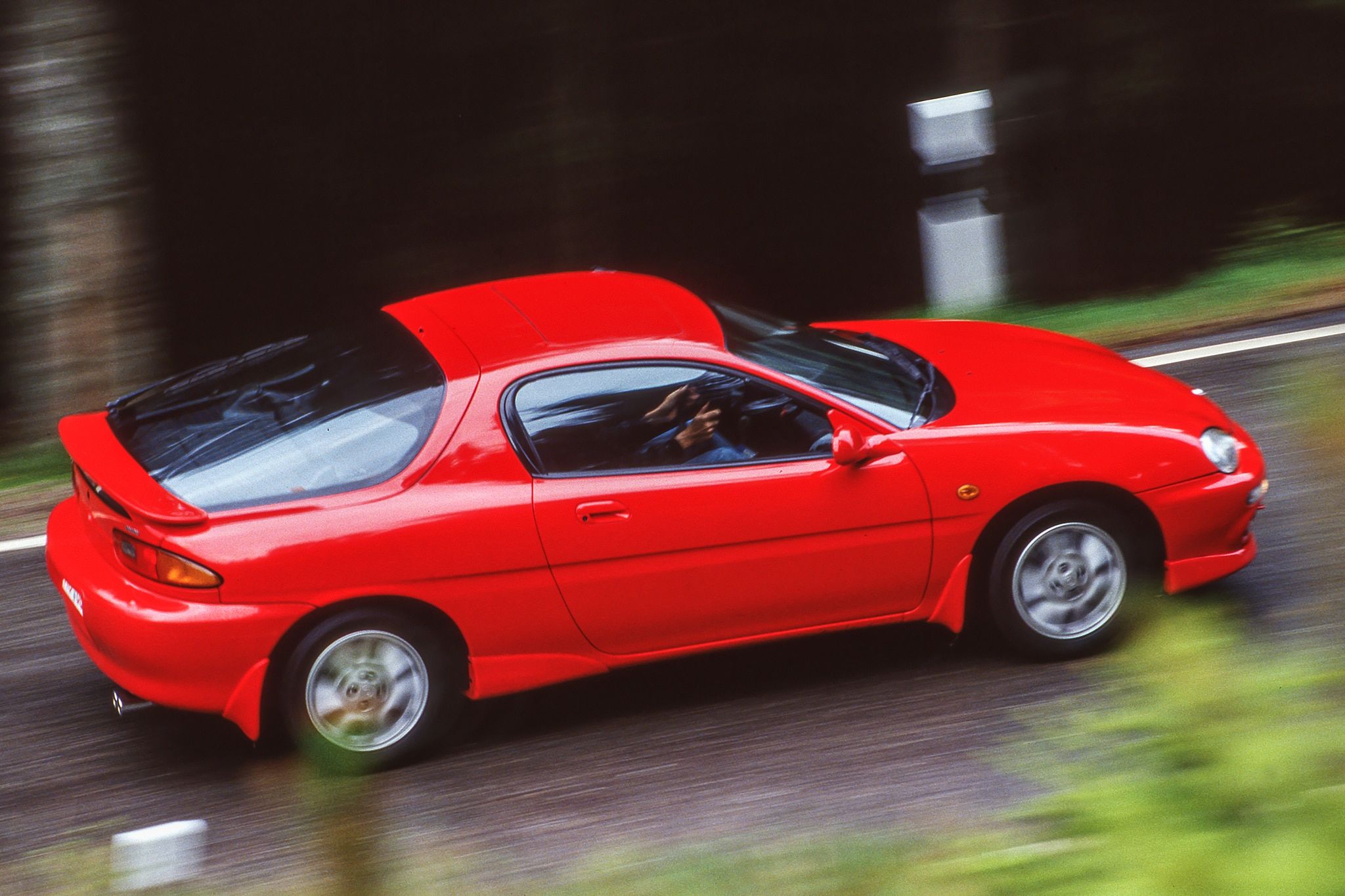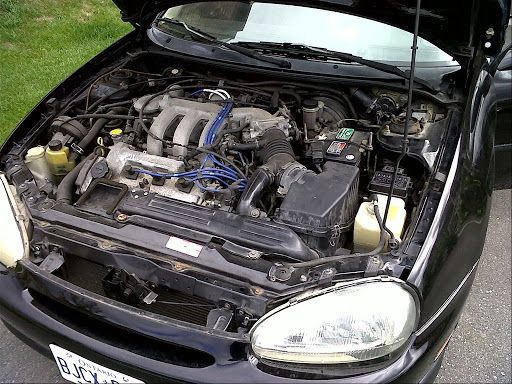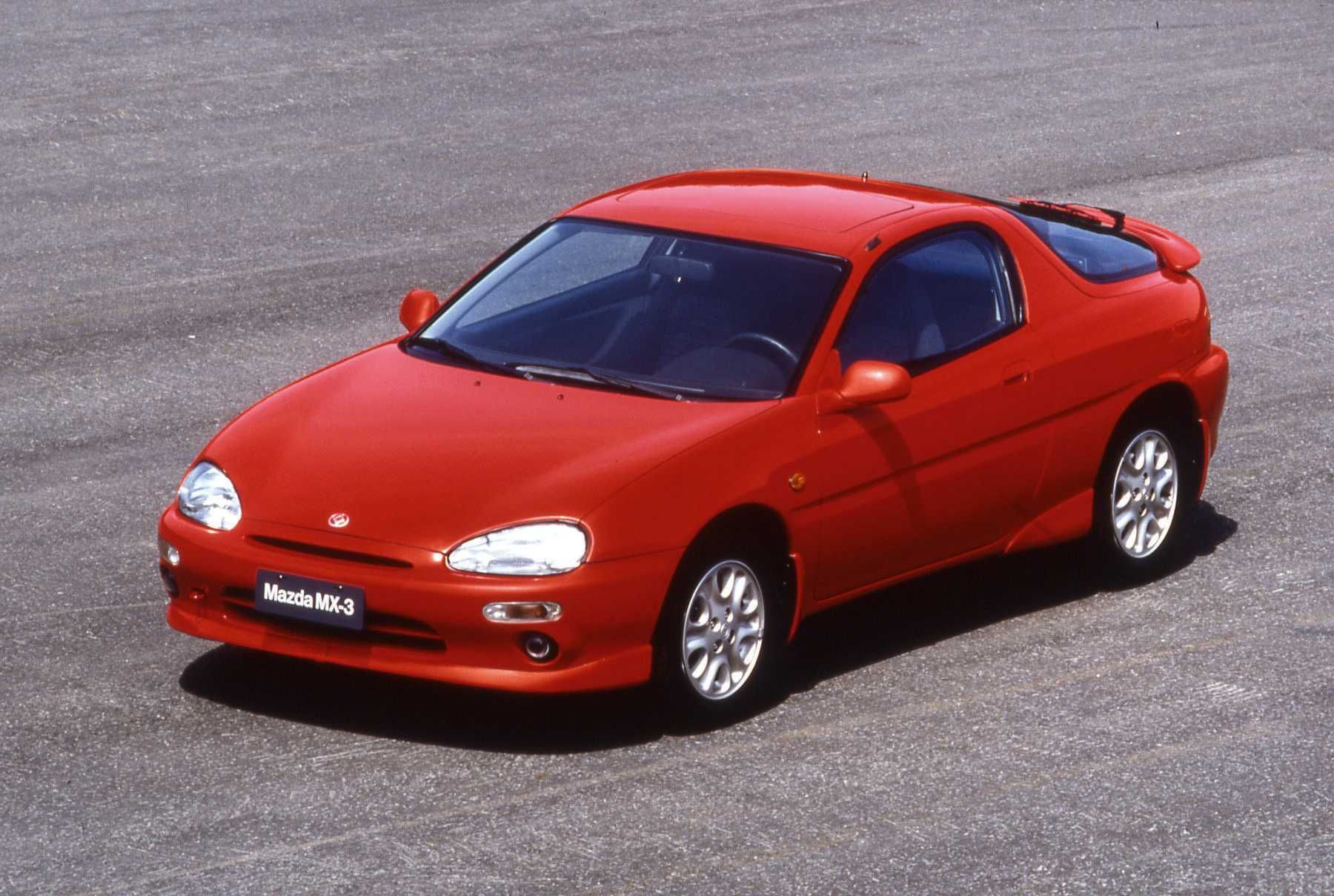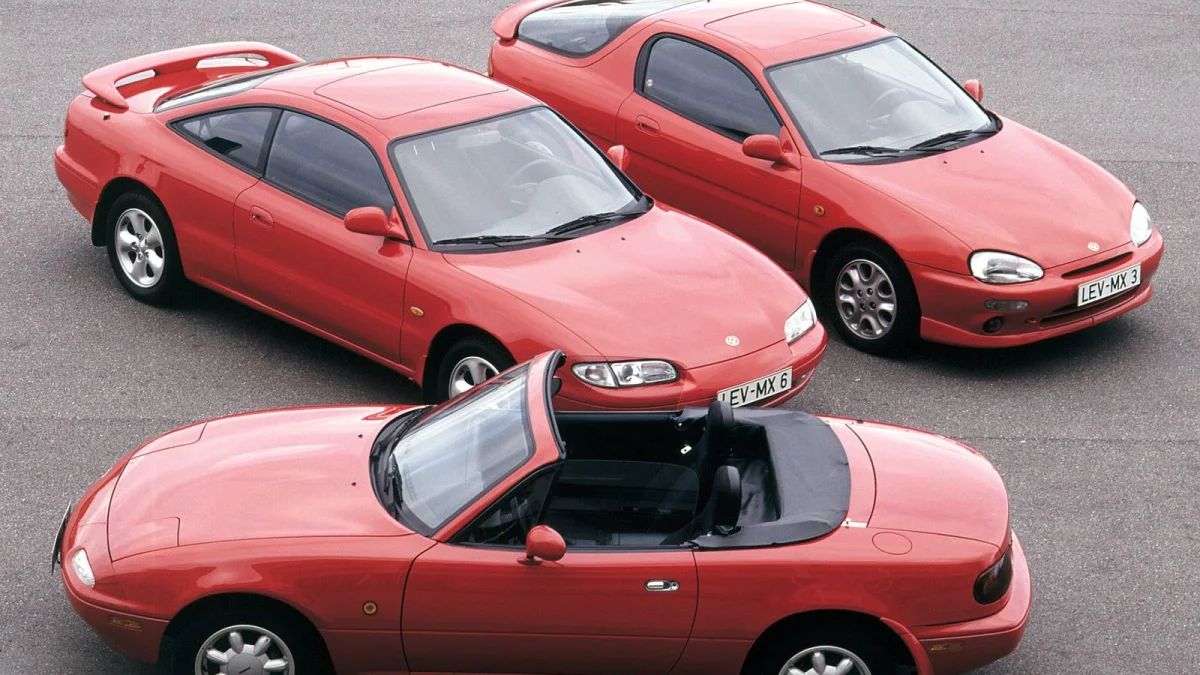When thinking of 90’s Japanese cars which ones come to mind? Skylines, Supras, Evos, NSXs, maybe the Toyota Celica GT-Four? Those are most of the big names, the “JDM heroes” as we’ve so humbly called them. But within the ranks of all the big JDM manufacturers were entirely other segments of car, with equally hot competition.
In particular, there was a subset of compact, economical front-wheel-drive cars fighting for their brand’s name in the lower categories. Some of the particularly successful ones should be familiar to you: Acura Integra, Honda CRX, and Mitsubishi Eclipse, to name a few. These were early hot hatchbacks, developed in a world totally separate from the European hot hatch market and thus with different design standards, different goals to chase, and different buyers to convince.
As such, they were all incredibly unique, each with its own killer feature to set it apart from the rest. Mazda’s entry into the fray, the MX-3, is perhaps the most indicative of this idea. In production from 1991 to 1998 and first available to the buying public in 1992, the MX-3 (also known as MX-3 Precidia, Autozam/Mazda AZ-3 and Eunos 30X in different markets) was perhaps best known for its high-revving, low-displacement 1.8l V6 engine and its trick suspension that mimicked four-wheel steering without the extra bulk or weight of such a system.
It’s a brilliant little car, but it could never break out of the vast shadows cast by its bigger brothers, namely the MX-5 Miata and RX-7 – both of which are revered by car enthusiasts as the standard-bearers for driver involvement and “natural driving experience.” However, we’d argue the lightweight and mechanical purity of the MX-3 should put it up there among its stablemates, regardless of driven wheels.
The Mazda MX-3 is a quirky Radwood-era classic, and here’s why:
Small Six-Cylinder Engines Are Awesome
Arguably the MX-3's best attribute is its engine: the "K8-DE" 1.8l, 130hp V6. It's an unusually small displacement for a six-cylinder engine, but its reasons for this are twofold: Cars sold in Japan are subject to a higher road tax if their engines exceed 2.0 liters of displacement, so Mazda wanted to keep it below that number to keep it in a lower tax bracket.
The K-series V6s were also allegedly designed to mimic the smoothness and even the sound of a rotary engine, which was Mazda's flagship sportscar powerplant at the time. It would obviously be more fuel-efficient than a rotary and require far less regular maintenance.
The K8-DE engine is all aluminum with dual overhead cams and a high compression ratio. As such it redlines at 7,000 RPM but it can wind up as far as 7,800 before fuel cutoff. That's a ton of revs for a small engine, and you'll need to use them extensively - peak power comes on at 6,500 RPM.
There are tons of mods and go-fast components you can buy for your MX-3. Some owners will swap the heads and intake manifolds from the JDM-spec K8-ZE engines, which had slightly different cam profiles and runners to produce 15 more horsepower than the US-spec. Some people will even "big block" swap these cars, replacing the K8 with a 2.5l KL-series V6 from the bigger Mazda MX-6, 626, or Ford Probe GT.
The MX-3 had four-cylinder engine options too: a single-cam 1.6l and a dual-cam 1.6l, which produced 88 and 106 horsepower respectively.
It’s Packed With Clever Tech
On top of an already clever compact V6 engine design, the rest of the car had its share of clever tech to give it an edge over rivals. The engine used a system which Mazda called "Variable Resonance Induction System (VRIS)," which used dual resonance tubes with valves that opened and closed at different RPMs to increase torque output, according to Automobile Magazine. This meant that the 115 lb/ft of torque produced by the K8-DE peaked at 4,500 RPM, but more torque would be available over a wider rev band.
It also had some clever chassis tech to help with handling, setting a standard for Mazda's future FWD vehicles. Its rear suspension used Mazda's "Twin Trapezoidal Link (TTL)" system, which allowed the rear wheels to rotate slightly with the car in corners, mimicking the feel of a four-wheel steering system and tightening up the car's handling characteristics.
Elsewhere, the car used conventional steel and aluminum in its construction, but it was still very light, weighing around 1,100kgs. For reference, that's around 300 kilos heavier than the Honda CR-X, but the MX-3 was safer and more civilized than the ultralight Honda. The MX-3 had standard power steering, driver and passenger airbags, and A/C, all of which were options on the CR-X and the early Integras.
It’s Disappearing Quickly
The Mazda MX-3 is a rare beast indeed nowadays. They're hard to find on classifieds, but there seems to be a handful peppered across the country. Most are dirt cheap now; even the nicest, lowest-mileage V6 models barely push $5,000.
1990s Mazdas are in a weird place at the moment. Much praise is lauded upon the FD RX-7, for good reason, and values for those cars have hit levels so high they're breaking free of the Earth's gravitational pull. The NA Miata is also a darling, and though they can be found for a fraction of what a good FD costs, they're still starting to gain value and collectability. But what about Mazda's forgotten FWD sports coupes? The MX-3 is rare and nearly valueless, and it's a similar story for the larger, more mature MX-6 coupe. It's a sweet little car, but it never seemed to make a name for itself.
The Mazda MX-3 was a part of a wave of new models that followed the release of the FD RX-7. It was a multi-headed offensive following the brand’s acquisition by Ford and subsequent redesigning and reshaping for the 1990s. The MX-3 may have been the smallest and less immediately “sporty” of Mazda’s 90s lineup, but it was a lightweight, fun-to-drive coupe with a fizzy high-revving engine that you could comfortably drive daily. It had a hard time competing with the likes of Honda’s CR-X and Integra and the Mitsubishi Eclipse to make its place in the car cultural zeitgeist, but it is now one of the most accessible Radwood-era cars with enough interesting engineering to earn it the attention today which it deserved in the past.

